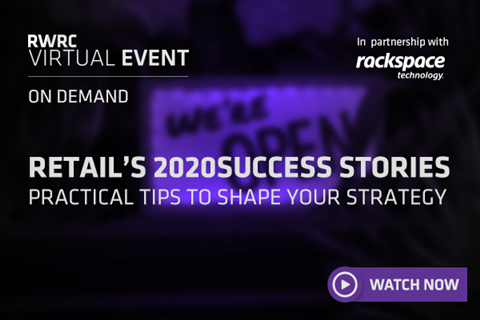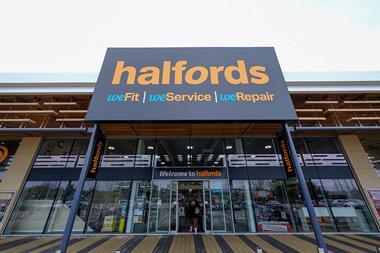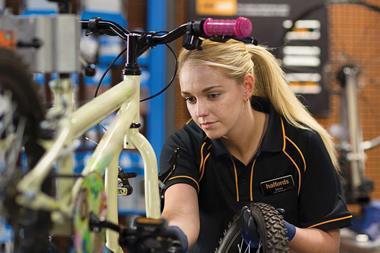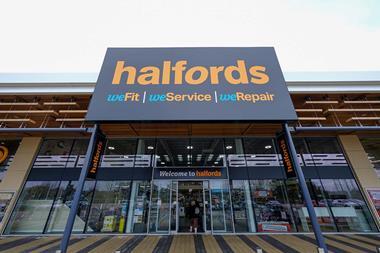PROMOTIONAL RESEARCH
From rapid pivots to reprioritising projects, two of retail’s big winners during Covid – Halfords and Studio Retail – share the secrets to their successful transformations.
Coronavirus has upended retail. It’s created a customer with very different needs, shopping in very different ways. Stores – particularly those in prime locations – have been eerily quiet, online sales have soared and demand for certain products such as occasionwear have fallen flat.
This new marketplace has created winners and losers, and those that have been agile and adapted quickly have emerged victorious.
Bike retailer Halfords and online retailer Studio Retail are sitting firmly in the winners’ enclosure and at Retail Week’s latest virtual event, held in partnership with Rackspace Technology, we found out what has driven their stellar performance and how to get transformation right.
Watch the event on demand now: Retail’s 2020 success stories – practical tips to shape your strategy
Halfords pivots model
Helped by the surge of consumers jumping on their bike during lockdown or investing in their car to transport them on their summer staycation, Halfords has been in boom since March. However, it is its ongoing digital evolution that has helped it take advantage of this demand.
Halfords group IT director Neil Holden said: “There’s a huge level of change we’ve all seen around digital technology and data as a result of the pandemic, both operationally and driven by changing customer expectations, which the industry has never seen before.
“We started the strategy a while ago, but we’ve had to pivot and change different elements of that strategy through this year”
Neil Holden, Halfords
“We’ve had to change our model repeatedly this year. We started the strategy a while ago, but we’ve had to pivot and change different elements of that strategy through this year.
“We created a fast start plan early on in lockdown. We’ve enhanced the proposition, the acceleration in digital transformation is exponential. This quarter, we’ve invested £3m in digital technology.”
Hear more from Halfords and Studio Retail by watching our free virtual event on demand now: Retail’s 2020 success stories – practical tips to shape your strategy
Halfords group IT director Neil Holden and Studio Retail digital director Chris Chalmers – two of retail’s big winners this year – joined our expert panel of Google Cloud retail industry manager Becky Postlethwaite and Rackspace Technology chief technology officer EMEA Simon Bennett to discuss:
-
Where to start your transformation journey and what targets to set

- Top tips for successfully implementing new tech
- The big hurdles retailers have overcome as they evolve
- How you can make change happen quickly
Halfords was already amid a dramatic transformation, which began in 2018, but it has carried out many development projects since the pandemic hit – including launching new apps, digitising manual processes, a new group data platform, and optimising the booking and scheduling for motoring business.
Holden said prioritising what projects to work on has been a big challenge over the past eight months. Halfords’ tech team has anywhere from 80 to 100 development projects on the go at one time, and recently had another 50 new initiatives submitted, he said.
“It’s tough when times change as they have recently and we have to adapt to different environments in terms of trade and restrictions. Your transformation can easily divert too far as you do whatever you need to keep your business on track.”
Halfords transformation team has strict criteria to prioritise projects ranking their complexity, level of return and what it could mean for customers. However, Holden admitted Covid-19 has shaken this system up and some projects, which have allowed it to trade over the pandemic, have gone straight to the top of the list.
Four steps to successful transformation
1. Listen to the customer
Transformation plans should be driven by what customers want from your business, said Holden.
“We’ve taken a lot of metrics and data from customers about what they expect from us and will do in the future,” he said.
This formed the basis of a review of the Halfords brand and purpose, which helped it create its future strategy.
Customer communication has been more important than ever during the pandemic when expectations are changing rapidly.
Studio Retail digital director Chris Chalmers said it has been in contact with customers more than ever to understand their changing needs, including a weekly ‘state of the nation’ poll designed to give insight into how its shoppers are feeling. He said Studio has been able to shape its offer based on these insights.
2. Set clear expectations
Setting clear objectives and timeframes, something Chalmers admitted Studio failed to do originally, is essential to help galvanise the business behind transformation.
“It’s harder to galvanise a business over loose objections rather than something that was anchored in a degree of realism,” he said.
3. Measure success
Retailers may have bold ambitions to overhaul how their business operates following a three- or five-year transformation, but it is important to measure success throughout to demonstrate progress and build confidence.
Rackspace Technology chief technology officer EMEA Simon Bennett agreed and said demonstrating success frequently throughout a drawn-out programme will spur a new way of thinking internally and encourage agile thinking.
He said: “It impacts the business which might traditionally have been risk averse. It’s important to chalk up a few wins. It allows the business to go ‘what if?’ and ‘can I try something new?’”
4. Get the whole business on board
Getting buy-in from the entire business about transformation is critical.
Bennett urged tech teams to understand the impact a transformation will have on the entire organisation and to explain to each team the change they will experience along with the benefits it will achieve.
“Getting that enthusiasm for that change and the benefits it delivers to all, and making sure everyone is bought in so when change does happen people can understand it’s part of the greater mission is essential.”
Studio benefits from digital investment
Studio Retail similarly began its transformation from a catalogue retailer to a digital pureplay in 2018 as it looked to take advantage of the market opportunity in value online.
In Retail Week’s league table of retail’s Covid winners, Studio ranked in the top five, following only digital-native businesses such as Ocado, AO.com, Farfetch and Boohoo, with sales jumping 39% in its half-year to September 25.
Chalmers said: “We took a lot of a pain last year shifting our core audience online, but we’ve had great success this year. The investments we’ve made have served us well.”
Studio has pushed ahead with further investments during the past eight months, including upgrading its new app, due to the “level of download velocity and sales participation during the pandemic”. It now showcases Studio’s full product offer and is personalised.
The retailer has also worked to strengthen security protocols after cyber fraud rose across the industry and invested in greater levels of data analytics to better understand the fast-changing customer during the pandemic.


























No comments yet